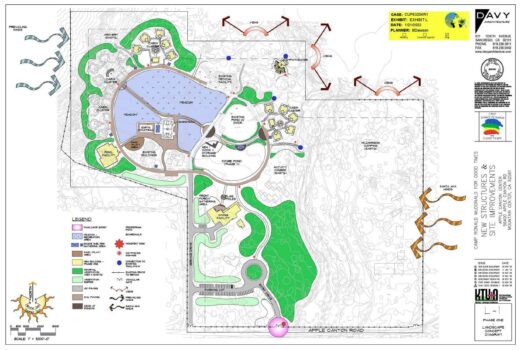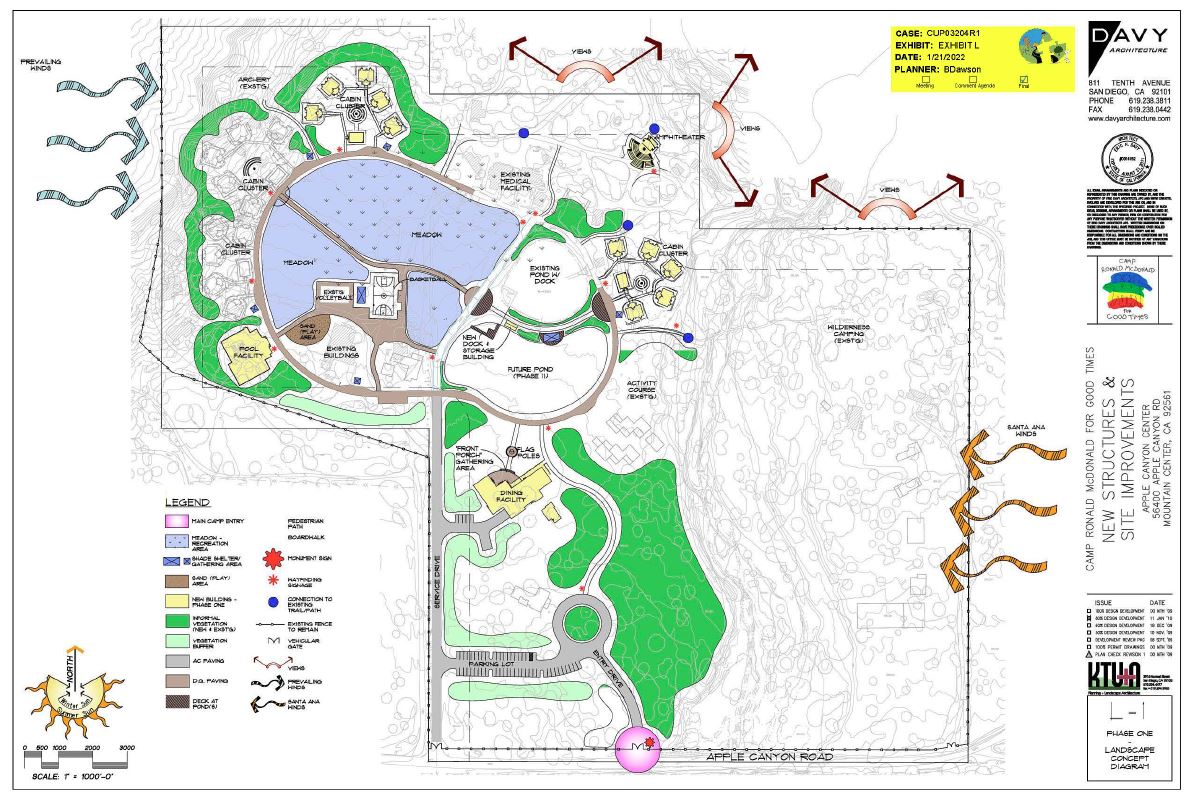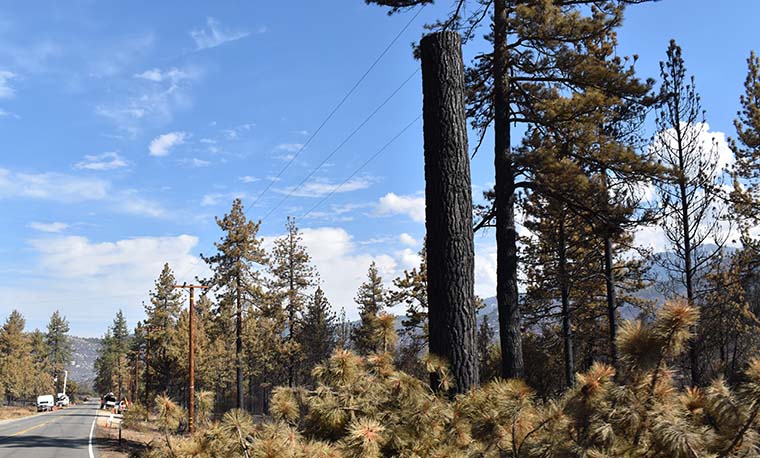The Riverside County Planning Commission unanimously approved revisions to the site plan at Camp Ronald McDonald in Mountain Center. The site in Mountain Center has been used as a youth camp since the early 1950s. Camp Ronald McDonald for Good Times purchased the property in 1994.

At its March 23 meeting, the commissioners heard from Brett Dawson, project planner, about how the proposed plan differs from the current Conditional Use Permit (CUP).
“The project proposal is to redesign the 59.14-acre site,” Dawson told the commission. Dawson stressed that the camp and its future development is fully compatible with the current zoning and land-use regulations.
Based on the findings and conclusions provided in the initial study of the environmental assessment, he also recommended the commission adopt a mitigated negative declaration. The environmental review found that the project will not have a significant effect on the environment.
In an email, Brian Crater, associate executive director for Camp Ronald McDonald for Good Times, explained why the revised CUP was needed now. “Our original CUP 3204 received in 1994 had a 25-year time period. In order to continue our phased development and receive building permits we needed to resubmit an application for a CUP.”
The revised CUP the commission approved last week has “… no substantive changes in the projects scope and services,” Crater stated.
In his recommendation to the commission, Dawson wrote, “The Camp Ronald McDonald for Good Times provides seriously ill children and their families a mountain recreation facility and infirmary where they can spend three to seven days away from the hospital atmosphere.”
In the summer, these visits can be weeklong stays. During the rest of the year, it is available for weekends, and two to three weekday visits.
The proposal includes demolishing several existing buildings, but over time, most will be replaced with newer facilities.
This plan will be implemented in three phases. In the first, housing for kitchen staff will be built and two new pavilions — basketball and horseback riding — for campers will be constructed.
“We have plans into [county] building [and] safety for our next cabin village (5 camper cabins /12 people each) and one meeting shelter to replace existing cabins built in the 1950/60s,” Crater said, describing the first steps. “[We will be] making the new units with full ADA access, green efficiency, the latest in fire safety systems.”
Future work will be consistent with the master plan for rehabilitating facilities and the pace will be set as donations permit, according to Crater.
In the next phase, more quarters for staff and an administrative building will be built. The new structures include housing for a director, a caretaker and medical staff.
The final phase will include more camper cabins and a pool facility.
The similarity between the old and new plans is exemplified by the pool facility, which has been envisioned for several years, and the camp’s capacity. With the changes, the camp’s capacity of about 215 campers, and 70 paid and volunteer staff will remain essentially unchanged.
Commissioner Gary Thornhill (3rd District) asked, “What’s the difference in square footage being replaced by the new. Is it substantially the same?”
Crater replied that the square footage was about the same. “The difference is negligible,” he stated. As the hearing portion ended, Crater confirmed that Camp Ronald McDonald was in agreement with the county’s conditions.
No one else chose to speak for or against the proposal. After Thornhill made the motion to approve the new CUP, the commission vote was 5-0 in favor.






